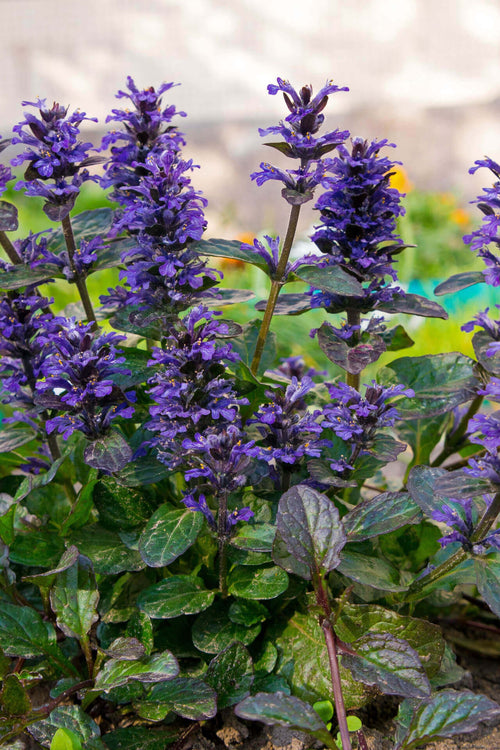Enhance Your Landscape with Color and Texture
A well-designed garden or landscape is more than just a collection of plants; it's a carefully curated masterpiece combining color, texture, and form elements to create a harmonious and inviting environment. One essential component of any successful landscape design is groundcover plants. These low-growing, spreading plants add aesthetic appeal and serve functional purposes such as preventing soil erosion, suppressing weeds, and providing a seamless transition between various garden elements. In warm seasons, selecting the right groundcover plants can affect your outdoor space's overall look and feel.
Benefits of Warm Season Groundcovers
Warm-season groundcovers are plants that thrive in the higher temperatures of late spring, summer, and early fall. Choosing these groundcovers offers numerous benefits for your landscape:
- Vibrant Color Palette: Warm season groundcovers come in various colors, from rich greens to fiery reds, sunny yellows, and even deep purples. These hues can add vibrancy and visual interest to your landscape, turning it into a lively and captivating area.
- Textural Variety: Groundcovers introduce a new dimension of texture to your garden. The leaves of these plants can range from fine and delicate to coarse and robust, allowing you to experiment with tactile experiences throughout your landscape.
- Weed Suppression: One of the most practical benefits of groundcovers is their ability to suppress weed growth. By forming a dense cover over the soil, they block sunlight from reaching weed seeds and prevent them from germinating.
- Soil Erosion Control: Many groundcovers have extensive root systems that help stabilize soil, making them excellent choices for areas prone to erosion. They can help protect against the loss of topsoil during heavy rainfall or wind.
- Water Conservation: Once established, warm-season groundcovers are often drought-tolerant, reducing the need for excessive watering. This conserves water and saves you time and effort in maintaining your landscape.
- Aesthetic Unity: Groundcovers create a sense of unity by connecting different elements of your landscape. They can visually tie together garden beds, pathways, and other design features, making your outdoor space feel more cohesive.
Popular Warm Season Groundcover Favorites
Let's explore some beloved warm-season groundcover options that can transform your landscape:
- Creeping Jenny (Lysimachia nummularia): With its trailing stems and bright green leaves, Creeping Jenny adds a splash of sunshine to any garden. It's ideal for hanging baskets, containers or as a groundcover that cascades over rocks or walls. This low-maintenance plant thrives in both sun and partial shade.
- Blue Star Creeper (Isotoma fluviatilis): Perfect for creating a lush, carpet-like effect, Blue Star Creeper offers delicate blue flowers and tiny, star-shaped leaves. It flourishes in shady to partially shaded areas, making it an excellent option for under trees or along pathways.
- Sedum (Sedum spp.): Sedums are known for their resilience and diverse textures. These succulent groundcovers come in various sizes, colors, and leaf shapes. They're highly drought-tolerant and can thrive in poor soils, making them suitable for rock gardens and arid landscapes.
- Liriope (Liriope spp.): Also called Lilyturf, Liriope features grass-like foliage and spikes of small, bell-shaped flowers. It's a versatile option that can thrive in sun or shade, and it's often used as an edging plant, border, or mass planting.
- Creeping Thyme (Thymus serpyllum): If you're looking for both visual and aromatic appeal, Creeping Thyme is an excellent choice. This low-growing herb releases a pleasant fragrance and produces tiny, colorful flowers when stepped on. It prefers full sun and well-drained soil.
- Ajuga (Ajuga reptans): Ajuga, also known as Bugleweed, is prized for its striking foliage and spikes of blue, pink, or white flowers. It's an adaptable groundcover that can tolerate various conditions, from sun to shade, and it's particularly effective in suppressing weeds.
- Sweet Potato Vine (Ipomoea batatas): While often used as a trailing plant in hanging baskets, Sweet Potato Vine can also be utilized as a groundcover. Its heart-shaped leaves come in various colors, including deep purple, vibrant green, and variegated combinations.
Design Tips for Incorporating Warm Season Groundcovers
To make the most of warm season groundcovers in your landscape, consider these design tips:
- Plant Selection: Choose groundcovers that suit your climate, soil type, and sunlight conditions—research and select varieties that align with your specific requirements to ensure their success.
- Contrasting Textures: Combine groundcovers with varying leaf textures to create visual interest. Pair fine-textured plants with coarser ones to achieve a balanced and dynamic effect.
- Color Cohesion: Plan your groundcover palette to complement the existing color scheme of your garden. Whether you opt for harmonious or contrasting colors, a well-thought-out color scheme can enhance the overall aesthetics.
- Pathway Border: Use groundcovers to define pathways and walkways. This adds a soft, inviting edge to hardscape elements and helps tie the landscape together.
- Under Tree Planting: Warm season groundcovers are especially useful for filling the bare soil under trees where grass might struggle to grow due to shade. Choose shade-tolerant options to create a lush under-tree area.
- Mass Planting: For a dramatic impact, consider mass planting a single type of ground cover in a large area. This approach can create a stunning visual effect while minimizing maintenance requirements.
Conclusion
Incorporating warm season groundcovers into your landscape design can elevate its aesthetic appeal, enhance functionality, and simplify maintenance. These versatile plants offer various colors, textures, and growth habits, allowing you to customize your outdoor space to suit your preferences. By carefully selecting and strategically placing groundcovers, you can create a visually captivating and cohesive garden that flourishes throughout the warmer months. So, take advantage of the vibrant array of warm season groundcover favorites and embark on a journey to transform your landscape into a masterpiece of color, texture, and natural beauty.



















































